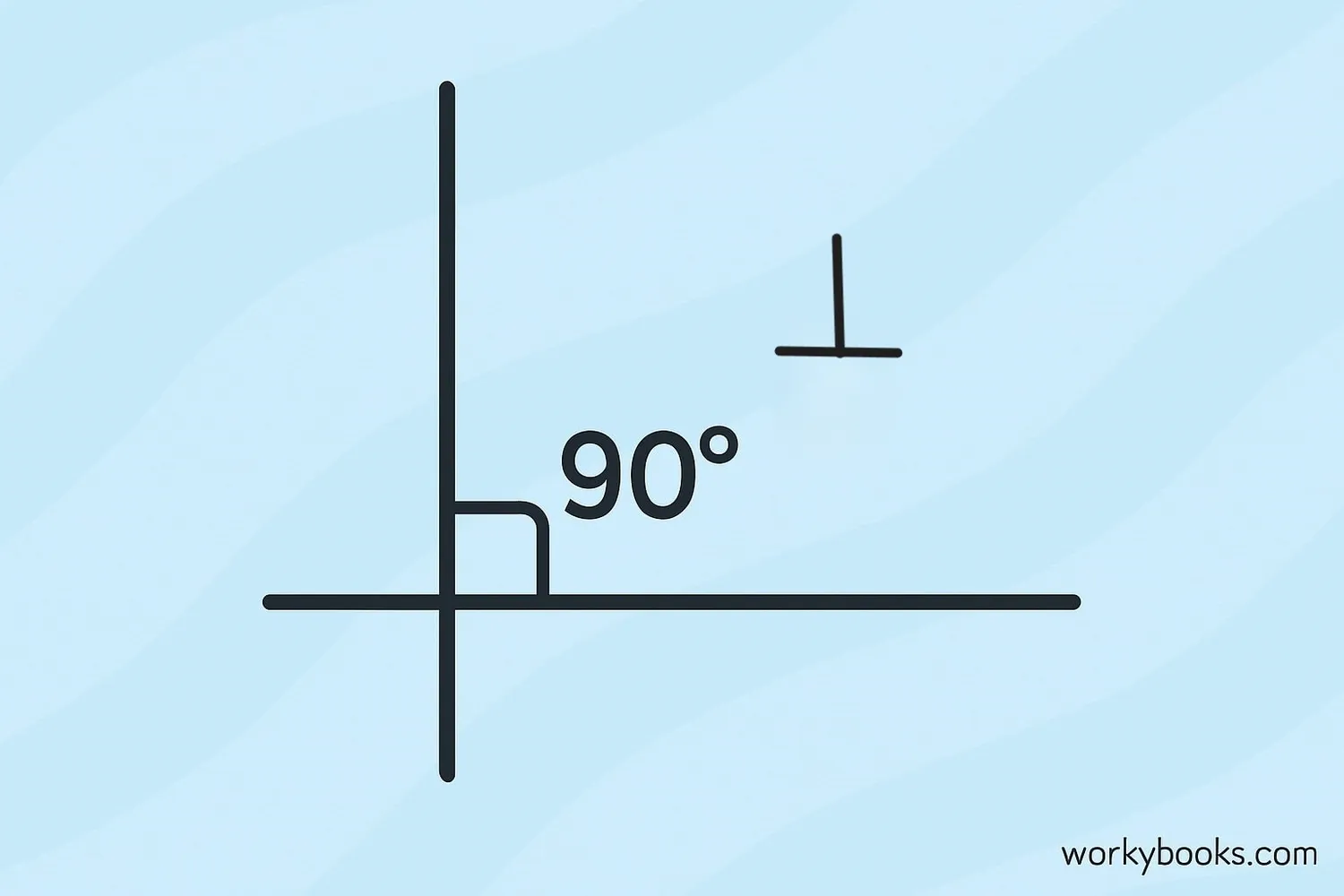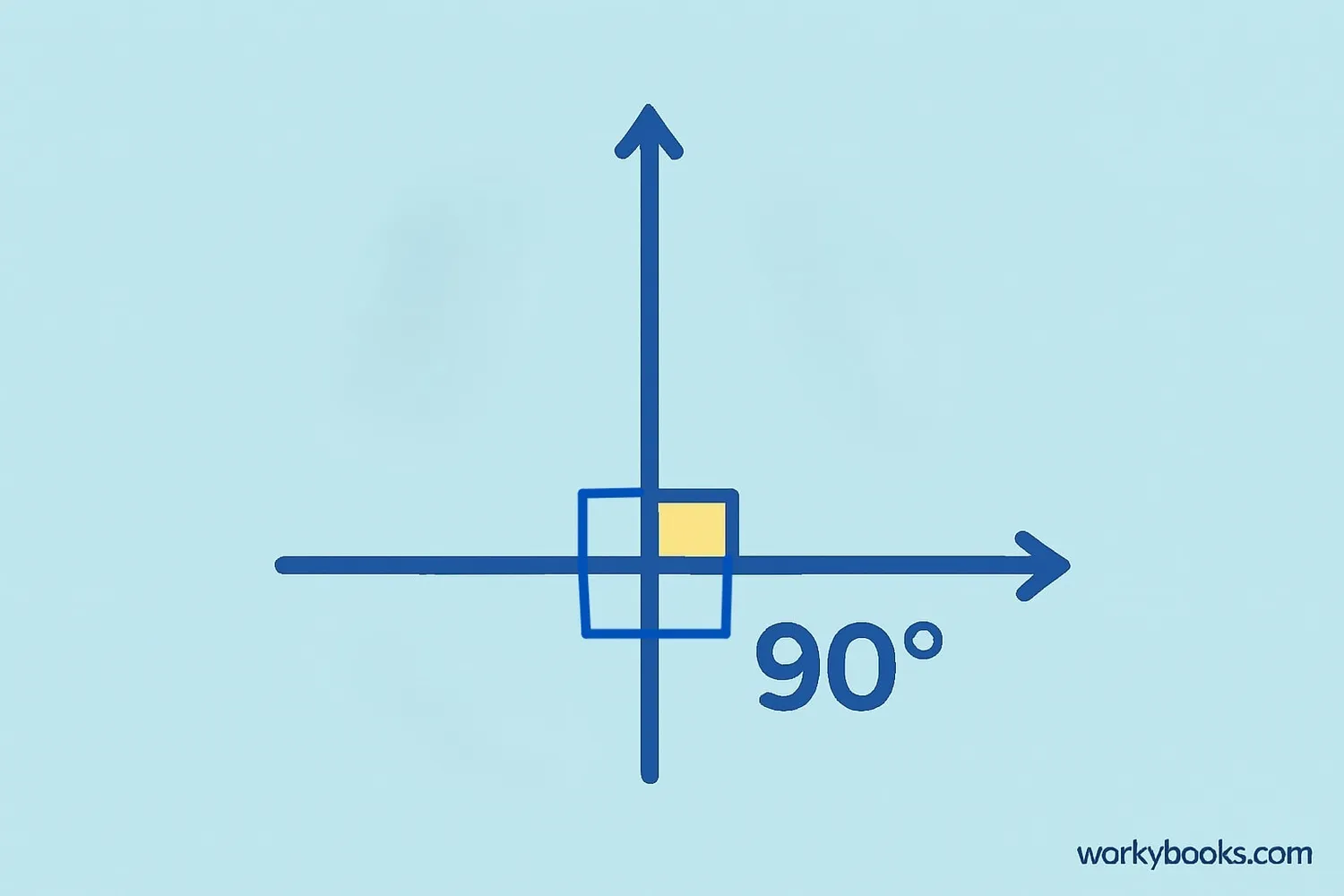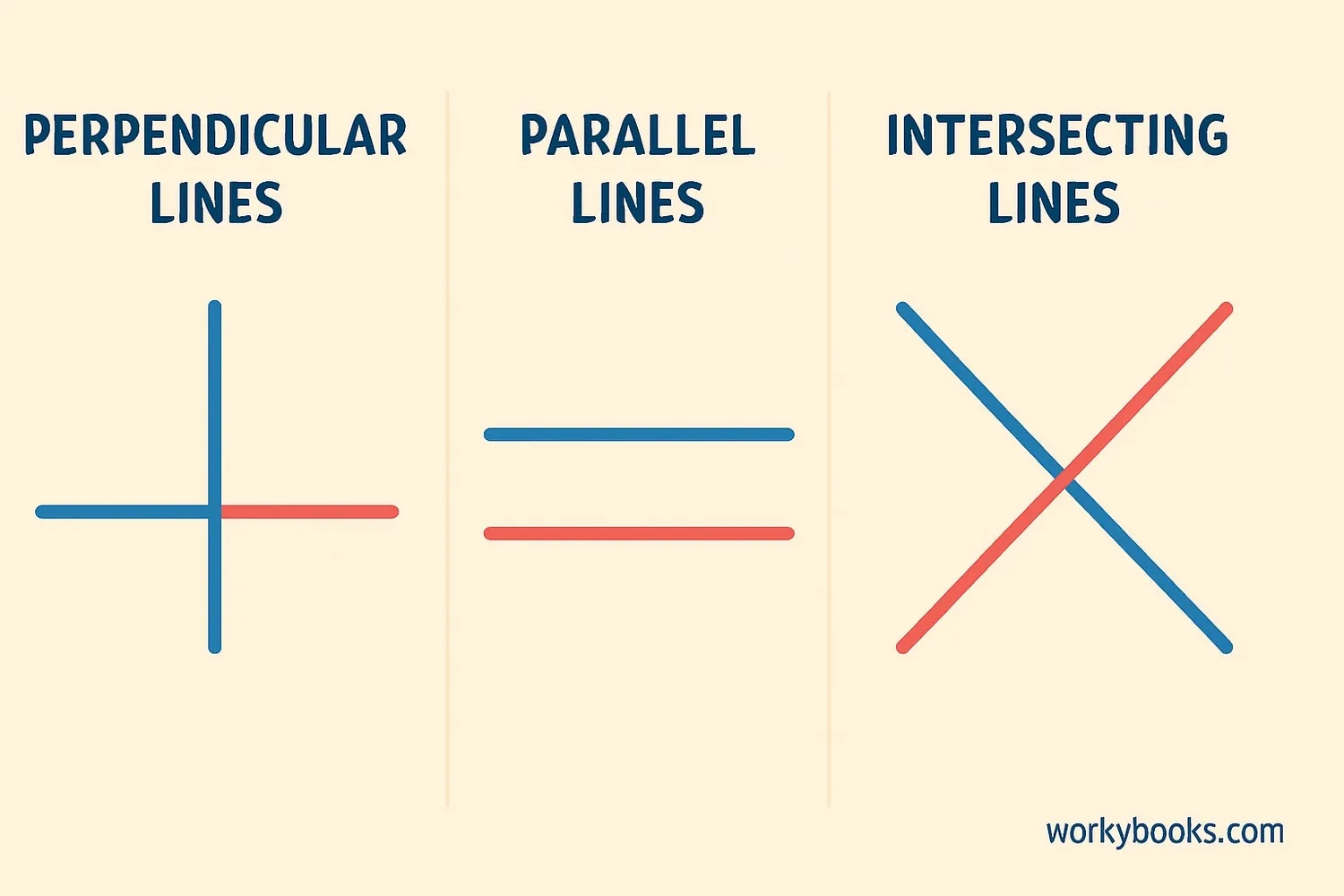Perpendicular Lines in Geometry - Definition, Examples, Quiz, FAQ, Trivia
Learn about perpendicular lines with visual examples, properties, and practice activities
What are Perpendicular Lines?

Perpendicular lines are two straight lines that meet or cross each other at a perfect right angle (90 degrees). The word "perpendicular" comes from Latin words meaning "exactly upright."
In mathematics, we use the special symbol ⊥ to show that lines are perpendicular. For example, if line AB is perpendicular to line CD, we write: AB ⊥ CD.
Perpendicular lines are everywhere around us! You can find them in the corners of rooms, in the plus sign (+), and in the capital letter T. When two lines are perpendicular, they form four right angles where they cross.
Key Concept
Perpendicular lines always intersect at exactly 90-degree angles. This is what makes them special!
Properties of Perpendicular Lines

Perpendicular lines have special properties that make them different from other types of lines:
1. Right Angles
When two perpendicular lines intersect, they form four right angles (90° each).
2. Equal Adjacent Angles
All four angles formed by perpendicular lines are equal and measure 90 degrees.
3. Symbol
Perpendicular lines are represented by the symbol ⊥ between the line names.
4. Unique Relationship
Two lines can only be perpendicular if they intersect and form right angles.
Remember
Perpendicular lines must be in the same plane (flat surface) and intersect at exactly 90 degrees.
Perpendicular vs. Other Lines

It's important to understand how perpendicular lines are different from other types of lines:
Perpendicular Lines
Intersect at 90-degree angles
Parallel Lines
Never meet, always same distance apart
Intersecting Lines
Cross at some angle (not necessarily 90°)
Perpendicular Bisector
A perpendicular line that cuts another line exactly in half
Key Difference
All perpendicular lines intersect, but not all intersecting lines are perpendicular. Perpendicular lines are a special type of intersecting lines.
How to Draw Perpendicular Lines
You can draw perpendicular lines using different tools. Here are two common methods:
Using a Protractor
- Draw your first line
- Place the protractor's center on the point where you want the perpendicular line
- Find the 90-degree mark and make a dot
- Connect the dot to the original point
Using a Set Square
- Place the set square on your paper
- Draw your first line along one edge
- Slide the set square so the other edge crosses the line
- Draw along the perpendicular edge
You can also draw perpendicular lines without tools by folding paper or using grid paper. On grid paper, vertical and horizontal lines are naturally perpendicular to each other.
Drawing Tip
When drawing perpendicular lines, always make sure the angle is exactly 90 degrees. You can check with the corner of a book or paper if you don't have tools.
Real-Life Examples

Perpendicular lines are all around us! Here are some common places you can find them:
Buildings
Corners of buildings, doors, and windows
Letters & Symbols
Capital T, L, H, and plus sign (+)
Coordinate Grid
X-axis and Y-axis are perpendicular
Furniture
Table legs meeting the table top
Observation Challenge
Look around your room. Can you find at least five examples of perpendicular lines? Start with the corners of your walls, door frames, and windows!
Perpendicular Lines Quiz
Test your knowledge with this 5-question quiz. Choose the correct answer for each question.
Frequently Asked Questions
Here are answers to common questions about perpendicular lines:
Perpendicular Lines Trivia
Discover interesting facts about perpendicular lines:
Ancient Use
Ancient Egyptians used perpendicular lines when building pyramids. They used a tool called a "groma" to create perfect right angles for their structures.
In Nature
While perpendicular lines are rare in nature, honeycombs contain many perpendicular angles. Crystals also often form with perpendicular faces.
Coordinate Geometry
In coordinate geometry, two lines are perpendicular if the product of their slopes is -1. For example, a line with slope 2 is perpendicular to a line with slope -1/2.
Most Precise Right Angle
Scientists have created the world's most precise right angle with an error of just 0.00000015 degrees! This is important for advanced technology like computer chips.





